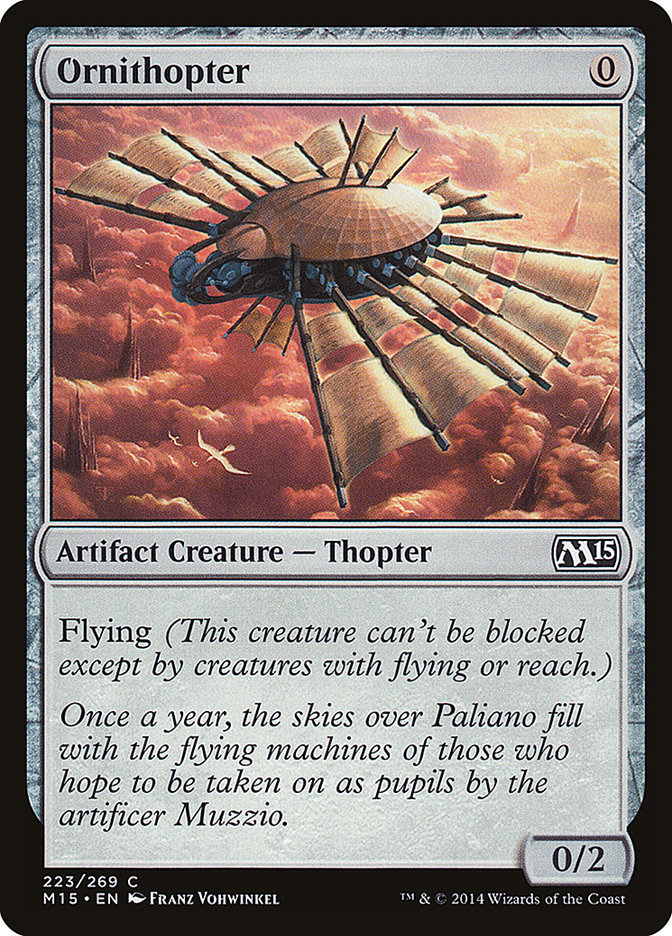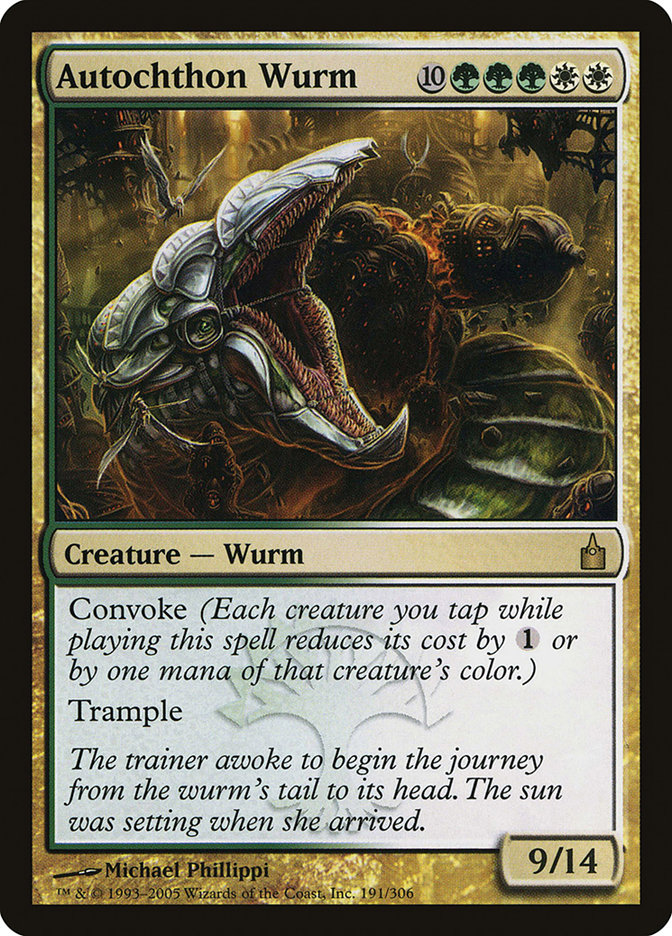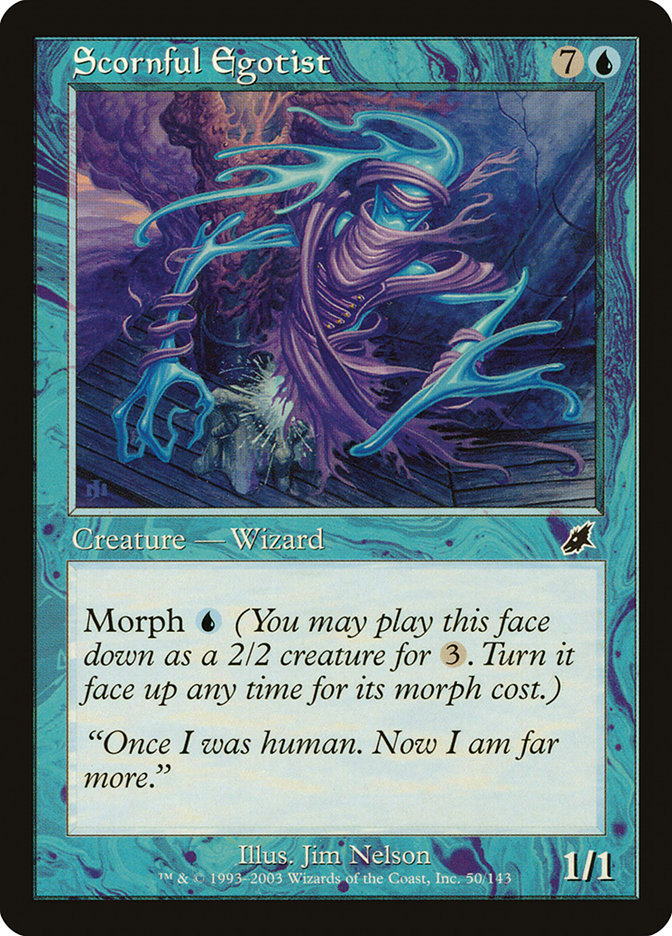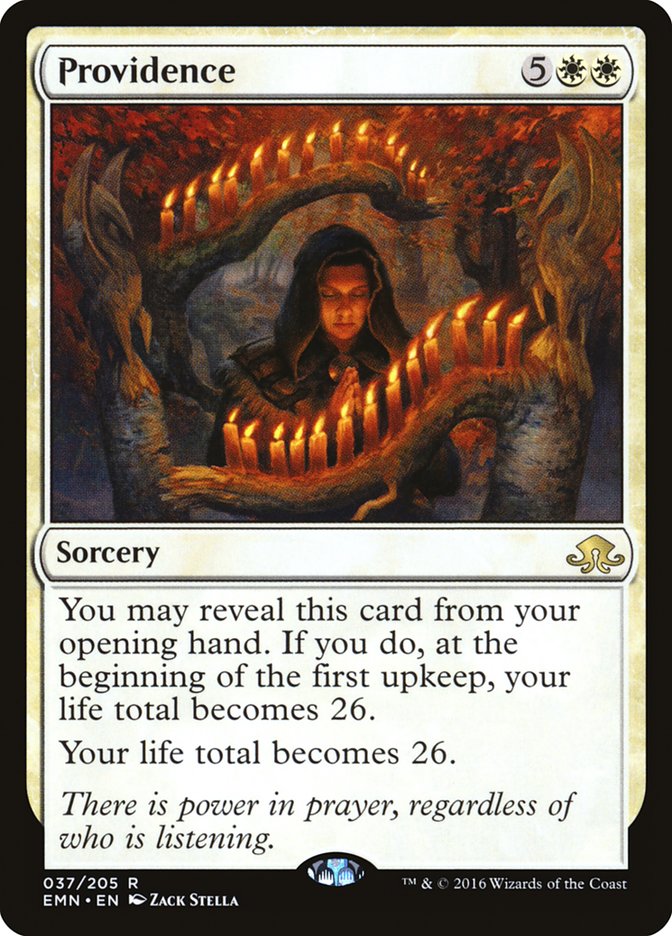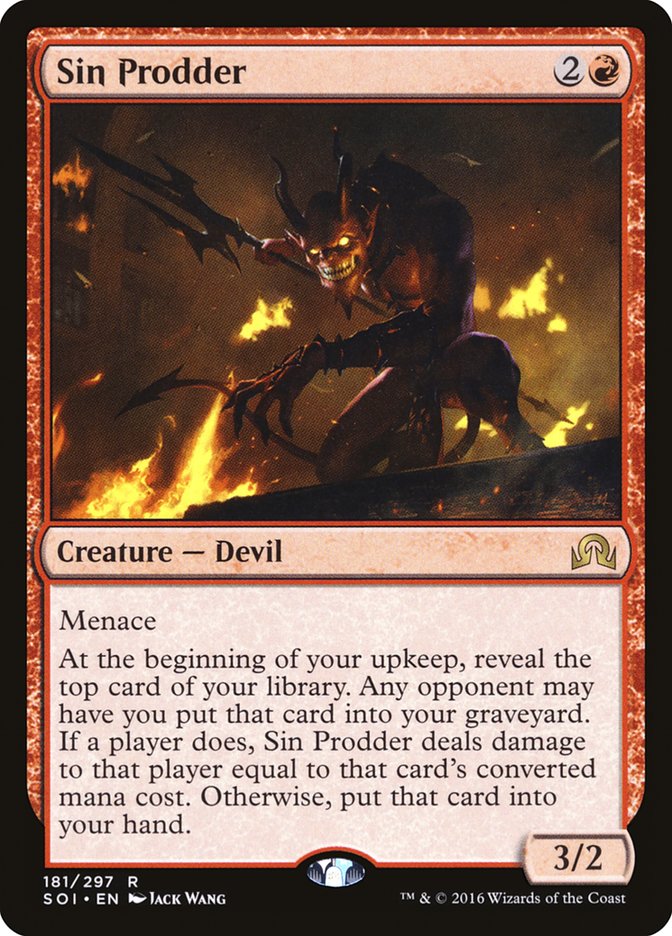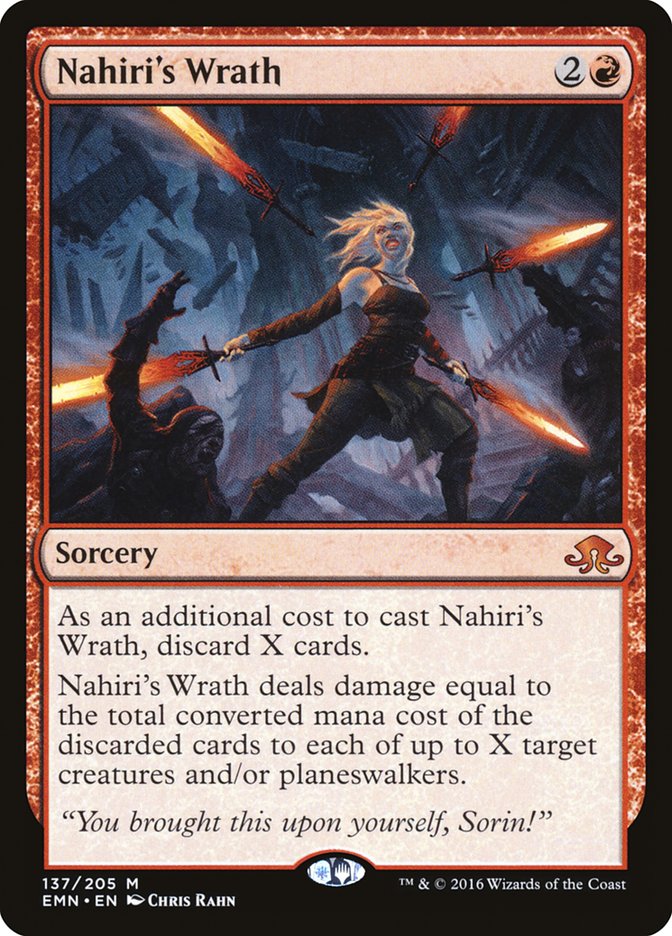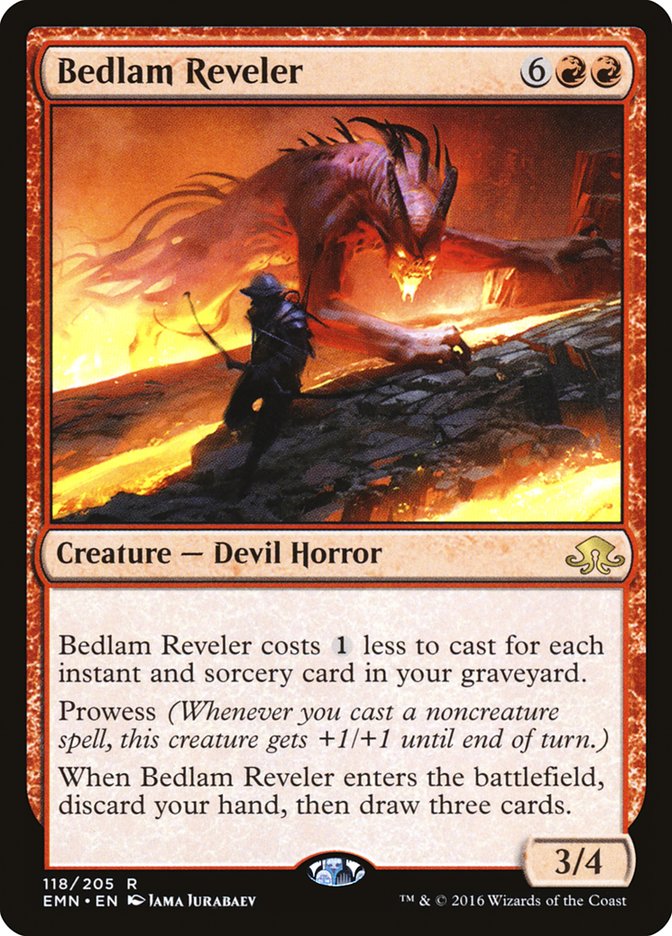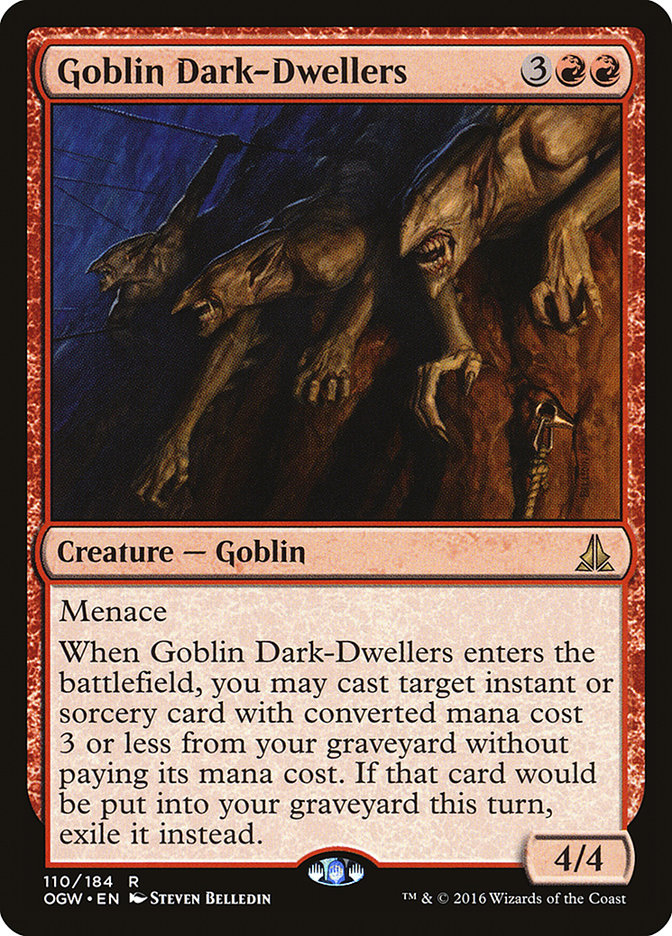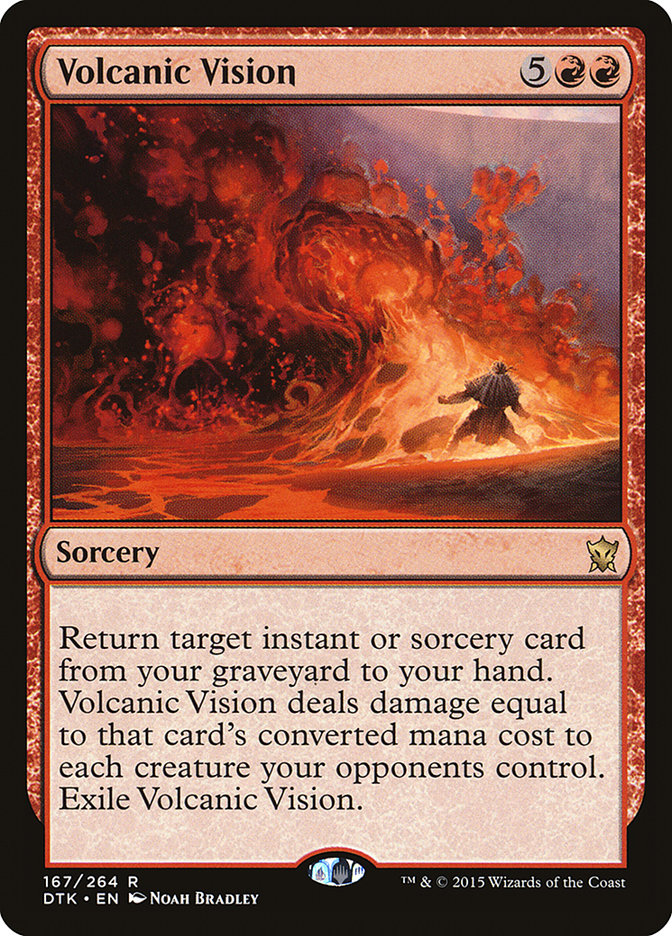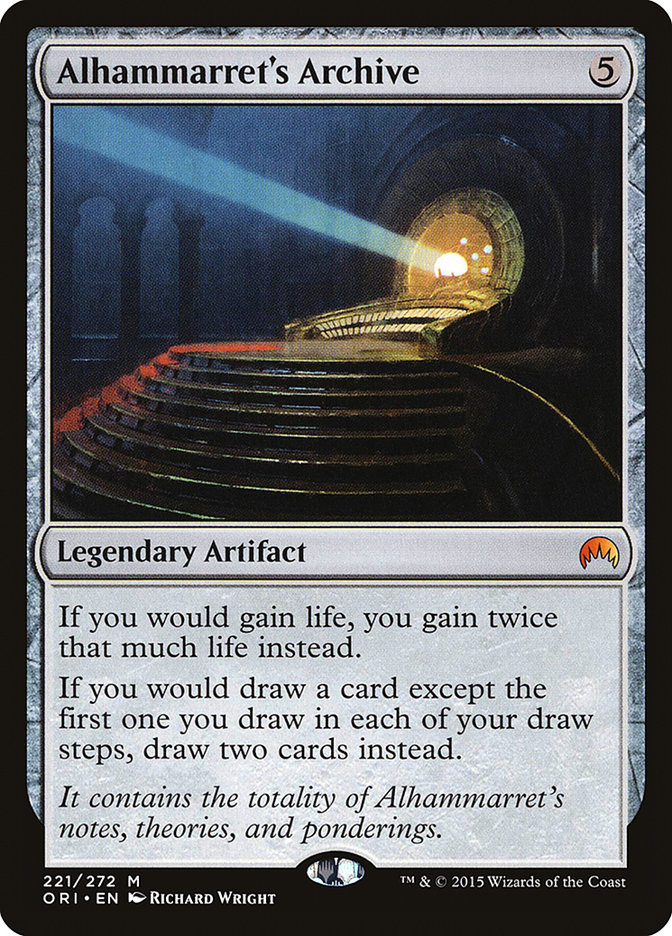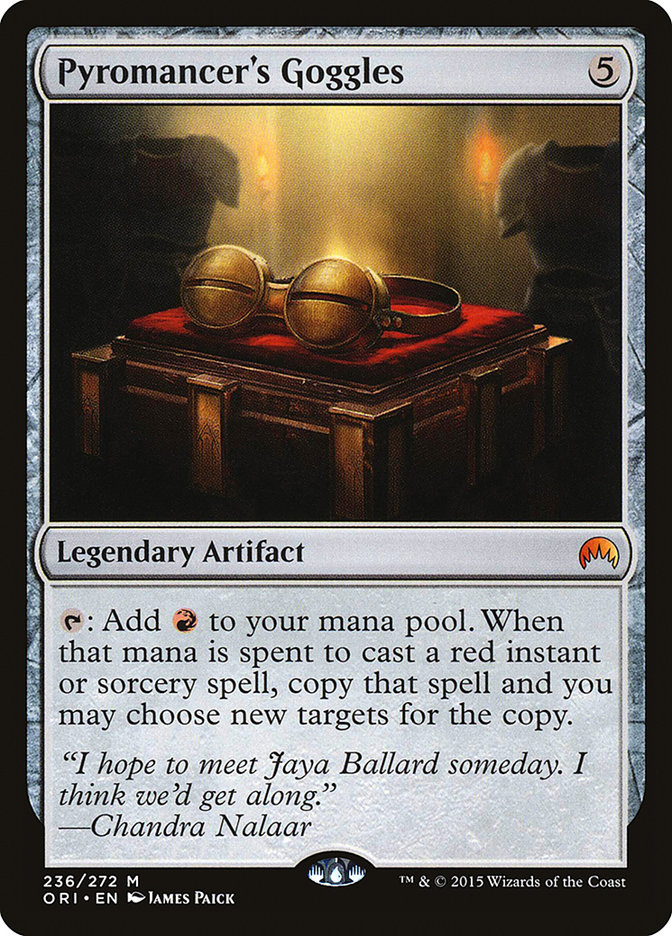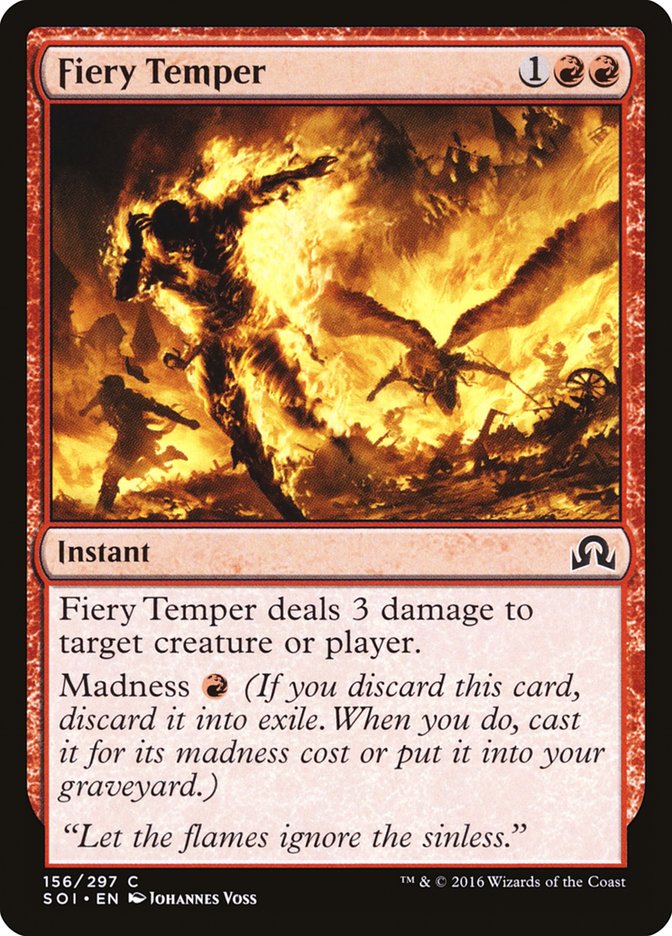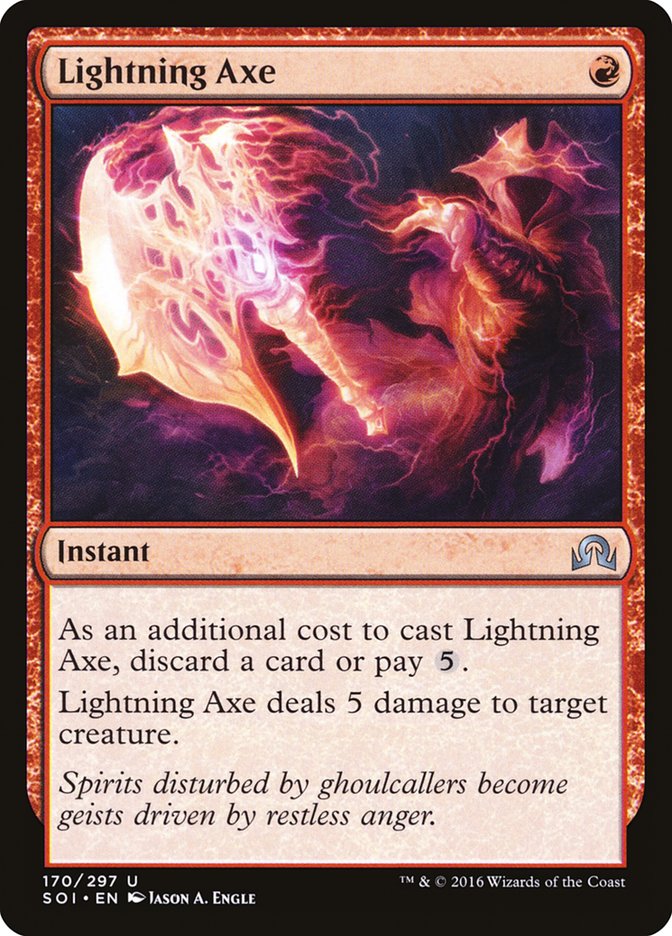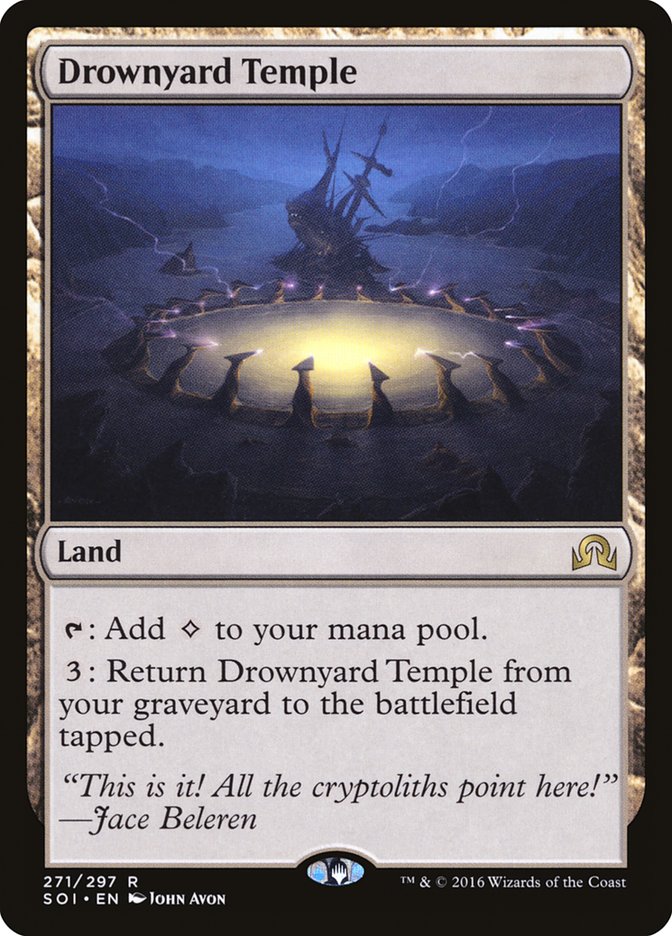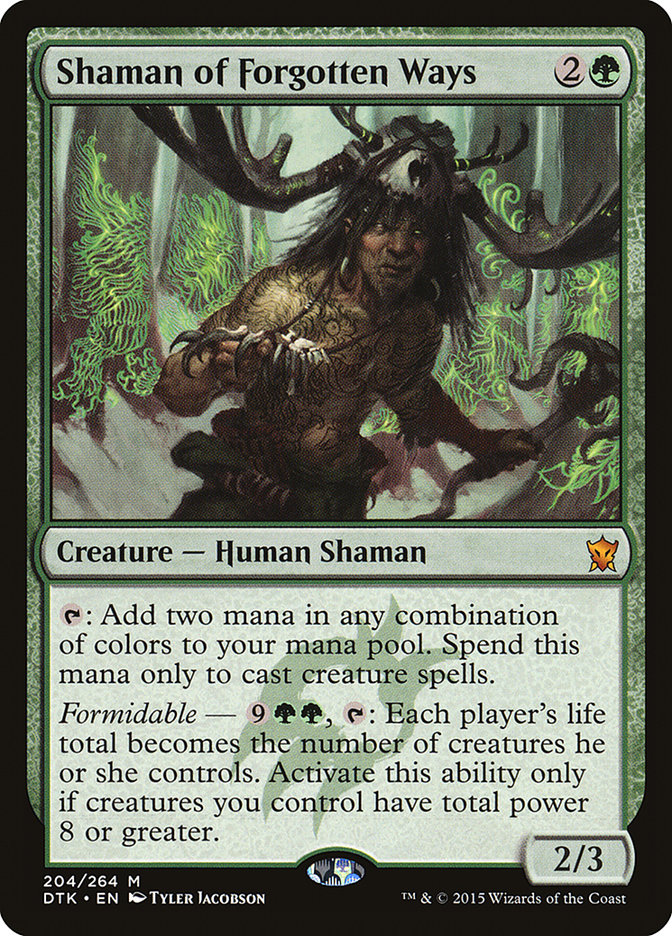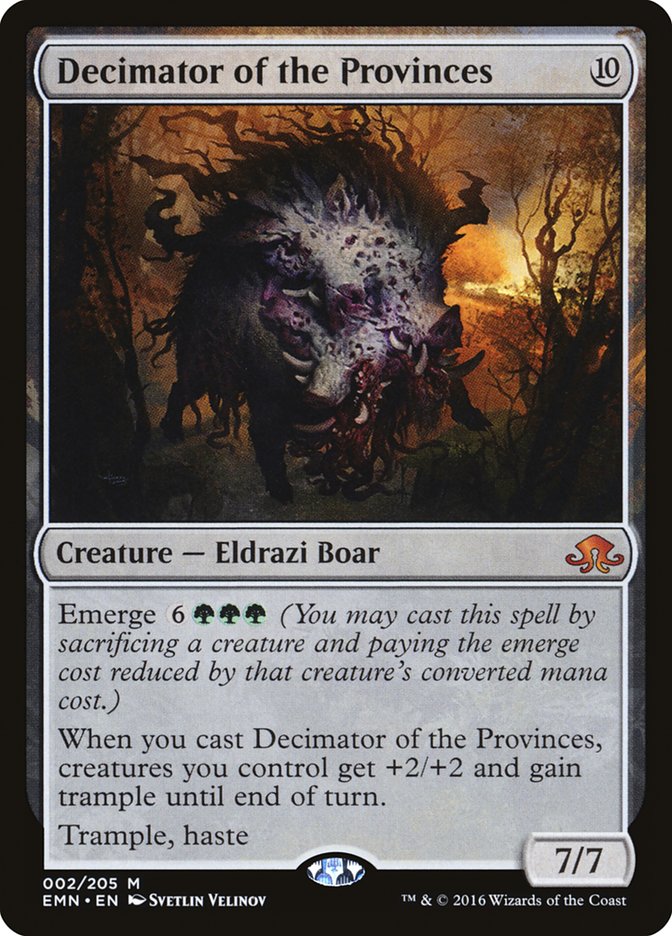One of the first things we learn in Magic is the importance of mana cost and, as a product of this rhetoric, the curve.
In most kinds of Magic, especially Limited, you want a nice curve. Having lots of cheap cards is great, but their power level is often considerably lower or more conditional, so they’re less reliable as a general rule. Make the curve too high, though, and a deck can run you over before you get the chance to cast a single spell.
Thus, we balance; some of our spells are cheap, a lot of them are in the middle to cover a variety of situations and play lines, and a few expensive spells close the game out or work perfectly with the team of monsters or spells you’ve already assembled. This is just as much probability as anything; you want to draw the cards that are most often relevant, and you want to leave the more conditional ones for those more corner-case situations.
However, there have been lots of cards over the years that have rewarded or punished you or your opponent for their converted mana cost.
Hailing the Egotist aside, this 1/1 Wizard for eight mana looks terrible on the outside, but thanks to cards in Scourge Limited like Rush of Knowledge, the Dragon cycle of enchantments like Dragon Scales and Dragon Breath, and Accelerated Mutation, playing such a superficially hilarious creature becomes a lot more reasonable.
Little did we know, but this mechanic has quietly snuck back into our Standard format.
Here’s where we start. Providence. This funny little card uses the “Chancellor” mechanic to have an effect at the start of the game, like Chancellor of the Dross or Chancellor of the Tangle from New Phyrexia. You get six life for free. If it’s in your opener, great; you start the game with six life that costs you no mana. If you draw it during the course of the game? It’s, shall we say, much worse.
These kinds of life resets have existed before, usually attached to a creature like Resolute Archangel or as a way to demonstrate a new mechanic, as with Heroes Remembered. Here, though, the real power in Providence is a bit more subtle. Casting a seven-mana sorcery that does not impact the battlefield doesn’t sound great, but there are lots of ways to use this card off the stack or as costs to other abilities that really make the seven mana a benefit, not a hindrance.
Sin Prodder puts much more pressure on an opponent when the cards you reveal are of a high cost. It’s easy to eat one or two damage a turn, but seven? That’s a lot of damage for absolutely no mana and extremely little downside. While we don’t have ways to easily manipulate the top of our library in the format, we can stack the deck to create opportunities to use our highest converted mana costs.
Nahiri’s Wrath also cares about converted mana costs. If your hand is full of high-costed spells, you can obliterate your opponent, either spreading out the damage with multiple lands and one heavy spell or a coupleof heavy cards to decimate a high-loyalty planeswalker or stubbornly large creatures. Discarding a pair of Providences is still enough to kill Emrakul, the Promised End, so I wouldn’t be too quick to write it off. Bedlam Reveler has a converted mana cost that tips the scales at eight, but very often you’ll be able to cast it for much less if you build correctly.
Speaking of which, let’s get to building.
Creatures (12)
Planeswalkers (1)
Lands (14)
Spells (33)

This was a fairly early prototype designed to test the effectiveness of the deck’s critical pieces, particularly whether Providence was too optimistic. I liked the idea of including Goblin Dark-Dwellers as a way to reuse cards like Collective Defiance, which allow you to turn the slots in your hand held by overpriced nonsense into more lands and cheaper spells. Goblin Dark-Dwellers also casts Nahiri’s Wrath, which can obliterate the opponent’s battlefield for no additional mana. My major question was whether I’d draw enough cards that would be relevant enough for me to cast spells in a reasonable, timely, and effective fashion.
I did not.
While I had good intentions with Goblin Dark-Dwellers as a way to effectively use spells and add a threat to the battlefield, it eventually vanished from the deck, not because it was a bad card, but because of poor deckbuilding. A 4/4 with menace did very little for this deck, and exiling spells from my graveyard wasn’t good for Bedlam Reveler, which then became more difficult to cast. I had too many effects that reset my hand to the point that very few of my cards actually mattered, even Nahiri’s Wrath. I had no reliable pressure or inevitability, a common ailment for my cutesy decks.
I had to lower the curve and make more powerful spells, as well as make the spells already in the deck more powerful.
Volcanic Vision is a card I’ve enjoyed brewing with during its duration in Standard. Now in its sunset months, it gets another chance to shine again. Recovering a spent or discarded Providence makes this a one-sided sweeper against all but the most powerful of creatures, and it replaces itself. Alhammarret’s Archive is an exceptionally powerful card in this matchup, mostly because of the raw power of the spells already represented. Bedlam Reveler draws you a mulligan to six. Tormented Voice draws you four cards, Geier Reach Sanitarium gives you the choice of two cards to discard, and, perhaps most importantly, Providence gains an obscene amount of life with the Archive.
Providence does a little bit better than a reset in most situations, but because it is life gain (assuming you’re going up and not down,) the amount is doubled as you gain the life. If you’re at four life when you cast Providence, you will gain 22 life to get to 26, but with Alhammarret’s Archive, you’ll gain 44 life and go to 48, which is an enormous amount of padding. That irritating Gideon, Ally of Zendikar can smack you all day, and a surprise army of Secure the Wastes becomes much weaker. You can completely price yourself out of losing the Thermo-Alchemist race, and you’ll be at such a lofty height you can take your time drawing the burn spells and creatures needed to kill your opponent.
Hedron Archive was really dull, but Pyromancer’s Goggles pushes it over the top. Copying Galvanic Bombardment is fun, and it does the same thing as Alhammarret’s Archive for cards like Tormenting Voice, allowing you to double up on effects to dodge the legendary rule.
We can slim the deck down to its core and, in doing so, make the deck its best self.
Creatures (8)
Planeswalkers (2)
Lands (16)
Spells (34)

Goblin Dark-Dwellers was weighing the deck down, and besides, now the creature base is entirely Devils! Perfect, considering this deck is full of shenanigans.
Fiery Temper should have been a no-brainer; it has a higher-than-normal converted mana cost, but it’s effectively cast for much less in normal situations. It’s still not overly expensive, so there will rarely be a time I don’t want this nice little burn spell in my hand. Lightning Axe activates the Fiery Temper and balances the Incendiary Flow, which exchanges instant speed for efficiency and the ability to exile a creature or aim at a player’s face.
Chandra, Flamecaller excelled in the first deck, so I upped her count to two.
In testing with Sin Prodder, both with this deck and with previous ones, revealing lands when you need them, only to have them be painlessly tossed into your graveyard, was painful. As this deck is basically mono-red, splashing for Providence and Needle Spires, it can support this colorless-producing land, allowing you to freely discard it and bring it onto the battlefield. I won’t even miss Hedron Archive!
The sideboard was carefully decided. Thermo-Alchemist has proven itself as an effective Gelectrode variant, and the 0/3 sizing is really important against R/W Humans and the format’s many 2/3s. Exquisite Firecraft, while slow for many decks, provides inevitability against slow, grindy decks, especially those filled with counterspells, either pre- or post-sideboard. There are a surprising number of relevant creatures with four toughness.
Nahiri, the Harbinger might not actually find a creature; instead, Alhammarret’s Archive might appear for one turn, allowing you to fire off a full-power Providence. Alternatively, you can put Pyromancer’s Goggles on your face and light up your opponent with an overwhelming burn spell. She also provides a way to deal with problem enchantments and artifacts, and with Alhammarret’s Archive, her +2 is exceptional in filtering your draw. I liked two more copies of Incendiary Flow, whether the removal, the exile, or the face burn is what you’re after.
Nahiri’s Wrath did not have a place in the maindeck, but where I did think it would excel is against an army of planeswalkers. The deck (and the color red in general) has plenty of ways to deal with creatures, but to kill multiple planeswalkers at once is backbreaking in the right context. It’s not efficient at all at killing creatures, but it sure does hit that Gatewatch pretty hard. Finally, Molten Vortex is a great way to offset the deck’s high land count in a match where you either don’t need to cast your expensive spells or you need ways to close out the game. Another win for Drownyard Temple!
I played this on a casual Wednesday night in a three-round event, plus a bonus round against my friend’s B/W planeswalker deck.
The first match, against R/W Humans, was a cakewalk. In both games, Providence put me six points ahead right away, and with a mess of burn and sufficient blocking, I didn’t dip below ten life in either game. Bedlam Reveler closed Game 1, and back-to-back Chandra, Flamecaller took care of Game 2.
The second match, against a U/G Emerge deck of sorts, featured Foul Emissaries, Exultant Cultists, and Shaman of Forgotten Ways instead of the traditional package sported by pros like Owen Turtenwald. Still, Decimator of the Provinces proved devastating, even after stabilizing with Providence. I ended up siding in the Nahiri’s Wrath in Game 2, and it saved me. He had Decimator in hand, but I swept the battlefield. Although we were both out of gas now, I topdecked Chandra, Flamecaller, and closed the game before he could make his Decimator. Game 3 was a trial where I gained a large amount of life with an Archived Providence, giving me enough breathing room to burn both of my Nahiri, the Harbingers to eliminate his Elder Deep-Fiends. Without lifegain, Thermo-Alchemists defeated him after a match that nearly went to time.
The “final,” as you might say, was an intense match against a G/B Delirium deck. Although I was able to remove most of his creatures, Mindwrack Demon was well-sized to dodge most of my removal, and without a blocker, I was under imminent pressure to end him before it ended me. I failed in the first game, but after sideboarding into Nahiri, the Harbinger, I was able to kill all of his creatures with my removal package. With Grasp of Darkness and the clunky Ruinous Path as his main removal, I was able to creature more threats than he could answer. Similarly, the lack of lifegain prevented him from patching himself up from the burn, and Exquisite Firecraft got Game 2. Game 3 was less intense as he stalled on three lands, casting Liliana, the Last Hope to seduce some burn. I ignored her and got the win.
Against my friend’s B/W planeswalker deck, I found myself powerless, even after sideboarding, with Chandra, Flamecaller being my main weapon against them. He got too much advantage, and I had too few ways to interact. In both games we played, he ultimated Sorin, Grim Nemesis.
Although this deck was a ton of fun to play, it does have some gaping holes. It was really a red and white control deck, not the midrange deck I had originally envisioned. This color combination can often handle permanents, but it cannot handle noncreature spells and targeted discard. I imagine that Duress and counter-heavy decks would tear this deck apart. Thus, it’s a great metagame choice in an aggro-heavy metagame because of the cheap, plentiful burn plus the lifegain and inevitability of the deck’s top-end.
Plus, it’s a unique, rewarding experience to play Scornful Egotist in spell form.
Several of you shared your experiences with Conspiracy: Take the Crown


